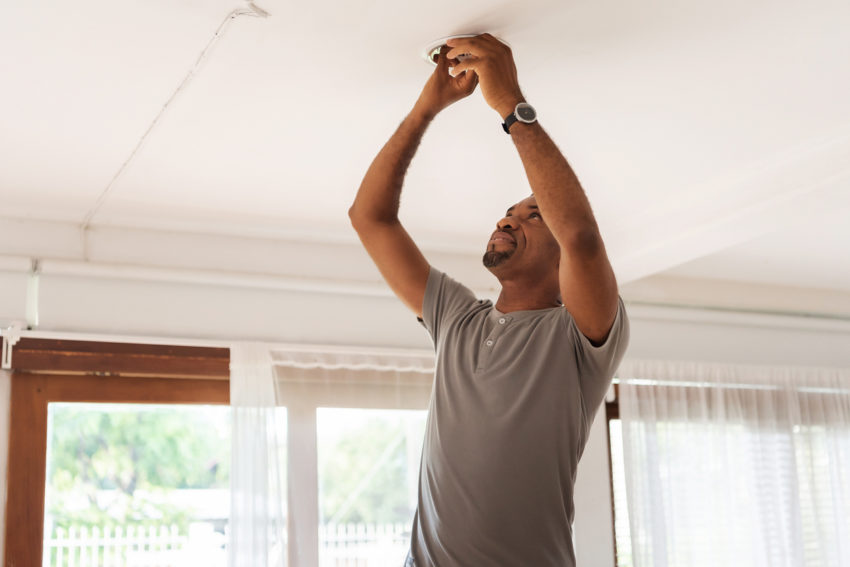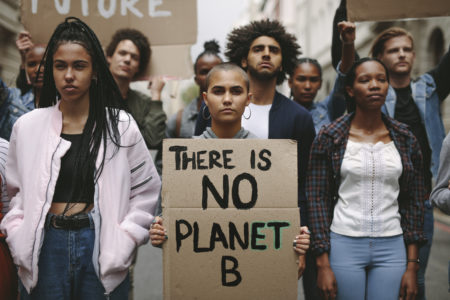
Share On Social!
Race/ethnicity plays a significant role in determining home energy use, emissions, and cost burden, according to a study by the University of Michigan and McGill University.
Majority-White neighborhoods had the highest per-capita emissions, researchers found.
In African-American neighborhoods, emissions were 90% of those in White neighborhoods. Latino neighborhoods had the lowest per capita emissions, at only 60% of White neighborhoods.
Yet communities of color pay higher energy rates than what they produce, adding yet another inequity that harms health outcomes among this population and other people of color, according to study co-author Tony Reames of the University of Michigan.
“People that are struggling financially and then have high energy burdens are forced to make tough decisions that slowly impact life outcomes,” he said. “[There is a clear] imbalance between energy benefits and energy burden.”
What Are the Disparities in Energy Use and Cost Burden?
Residential energy use represents about 17% of annual greenhouse gas emissions.
Past studies have shown that historic housing policies and financial lending practices, such as redlining, have negatively impacted housing quality and home ownership in communities of color and immigrant communities.
“Both [housing quality and home ownership] are key determinants of household energy use,” according to the new study. “But to date there has been no national scale analysis of how race and ethnicity affect household energy use and related carbon emissions.”
The new study led by Reames and his colleagues estimated energy use and emissions of 60 million U.S. household to clarify how energy efficiency and carbon emissions vary by race, ethnicity, and home ownership.
Key findings include:
- An emissions paradox exists in U.S. Energy efficient households have highest emissions.
- African-American households are less energy efficient than Caucasian households.
- Per-capita emissions highest in White neighborhoods. They are lower in both African American and Latino households.
- Current energy and emissions patterns related to historically racist housing policies.
Most importantly, the study showed that U.S. Latino and African American households suffer from higher energy insecurity and energy poverty than White households.
What Are the Reasons Behind Disparities in Energy Cost Burden?
The study by Reames and his colleagues found three major reasons for these disparities in energy use and cost burden.
Floor area, which is larger in White neighborhoods than African-American and Latino neighborhoods.
“Larger floor areas require more energy for space heating and cooling, appliances, and lighting,” according to the study.
Housing quality, which is again highest in White neighborhoods, is also a factor.
“Newer homes benefit from technologies that meet increasingly stringent energy efficiency standard,” according to the study.
Home ownership, which is lower in African-American and Latinx neighborhoods, is another element.
“Landlords seldom pay utility bills, which hampers investing in energy efficiency retrofits. This split incentive can lead to increased utility bills and can exacerbate energy poverty – households without adequate access to energy services,” according to the study.
Worse, there is no magic fix for these issues, the researchers say. 
“To equitably address the burdens faced by different communities to reducing energy use and emissions a national-scale multipronged policy approach is needed,” according to the study.
Climate Change and Latinos
The larger issue at play here is climate change.
Global warming is making life harder for Latinos and other communities of color.
Given current and historical emissions levels, Americans, specifically, are looking down the barrel of a hot, uncomfortable future.
Respiratory illness rates reflect this inequity, which include:
- Black and Latino children in the U.S. are diagnosed with asthma at higher rates than white children.
- Latino children are almost twice as likely to die from asthma as white children.
- For Black children the death rate from asthma is almost eight times higher than for white children.
A groundbreaking 2019 study estimated that “Black and Latino populations experience 56% and 63% more pollution respectively than their activities cause.”
Cities across the U.S. will experience harsher extreme-weather events, see increases in daily temperatures, and some might no longer be inhabitable.
Worse, this crisis will have significantly worse repercussions on underserved groups, including Latinos. These populations will have a more challenging time dealing with future consequences, but they are already enduring its current impacts.
Experts and researchers say recent extreme weather events—such as the massive snowstorm that caused rolling blackouts throughout Texas in 2021—is only one part of the broader climate crisis problem.
Climate change could lead to nearly 300 cities becoming uninhabitable.
Some of America’s most significant cities face the highest risks, as most are near a coast. These urban hubs contain large populations, capital assets, and ports that influence the national economy.
What Can I Do to Address Climate Change and Reduce Emissions and Energy Use?
The study by Reames and his colleagues had three main recommendations for immediate, multi-teared action.
They recommend:
- Finance retrofits and address split incentives
- Increase equitable access to rooftop photovoltaics
- Disincentivize high energy consumption and emissions
The study also suggests proactively addressing energy use and carbon emissions in new home construction. 
“Changes to zoning codes and requirements could also reduce future energy needs and related carbon emissions for the tens of millions of homes that will be built in the U.S. in coming decades,” according to the study. “Denser settlement patterns can reduce household energy use and carbon emissions … shifting towards land use planning regimes and financing models that prioritize multi-family apartments over single-family homes will help avoid locking these households into the emissions paradox for decades to come.”
You can share crucial environmental information with your local leaders, too.
If you’d like to continue making a difference in your community’s sustainability practices, download a Salud America! Health Equity Report Card.
The report card will show you how you will see how your county is doing on various health-related conditions compared to the rest of your state and nation. The data will show how your area stacks up in air toxin exposure, respiratory hazard indices, population density, tree canopy, and job rates in the agricultural, construction, and manufacturing fields.
Email your Health Equity Report Card to community leaders. Share it on social media. Use it to make the case to for health equity where it is needed most!
Explore More:
Chemical & Toxic ExposureBy The Numbers
1
Quick Survey
Can help you find out how chemically sensitive you are



